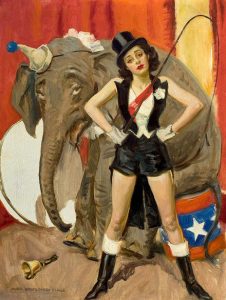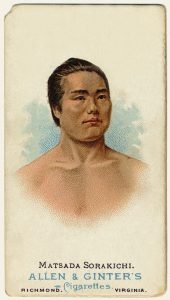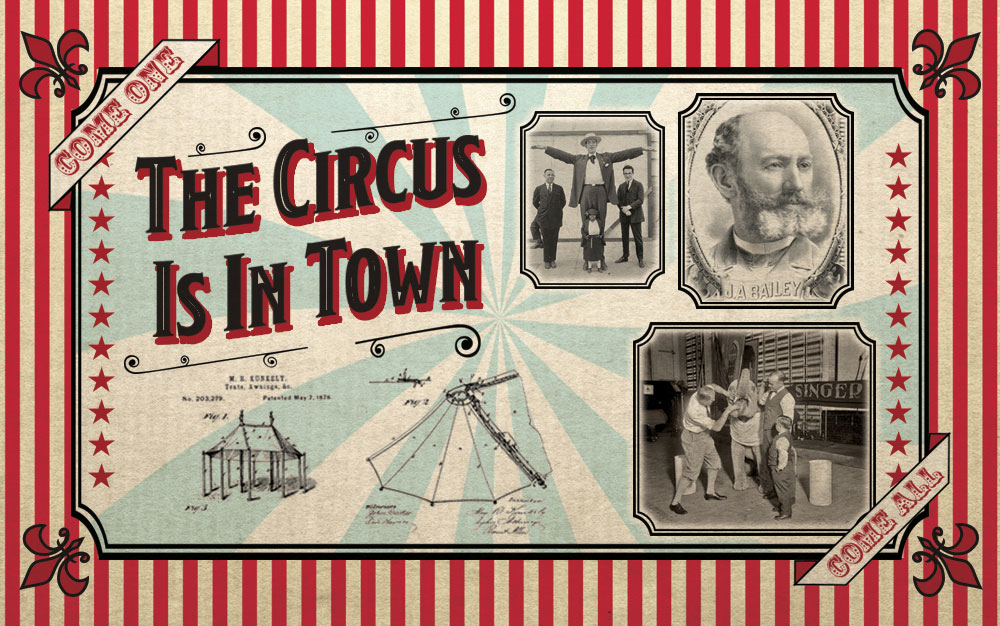
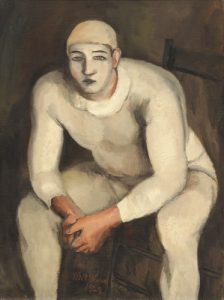 This month, New Yorkers will have one last chance to see the Ringling Brothers and Barnum and Bailey Circus. The Metropolitan Museum of Art is featuring historic images of the circus with an exhibition on George Seurat. Woodlawn is a wonderful place to visit to remember the many, many artists, both painters and performers, for their involvement with the “Greatest Show on Earth.”
This month, New Yorkers will have one last chance to see the Ringling Brothers and Barnum and Bailey Circus. The Metropolitan Museum of Art is featuring historic images of the circus with an exhibition on George Seurat. Woodlawn is a wonderful place to visit to remember the many, many artists, both painters and performers, for their involvement with the “Greatest Show on Earth.”
Walt Kuhn (1877-1949) the organizer of the historic 1913 Armory Show and successful painter, is best known for his portraits of circus performers. Kuhn’s circus paintings are in the collections of the National Gallery of Art and the Hirshorn Museum.
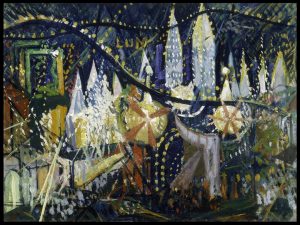 Joseph Stella (1877-1946) the Italian born “Futurist” painter, created bright images of the shows and rides of Coney Island and Luna Park. His brilliant paintings of early twentieth century entertainment can be seen at Yale University and the Whitney Museum of Art.
Joseph Stella (1877-1946) the Italian born “Futurist” painter, created bright images of the shows and rides of Coney Island and Luna Park. His brilliant paintings of early twentieth century entertainment can be seen at Yale University and the Whitney Museum of Art.
James Montgomery Flagg (1877-1960) , the prolific illustrator who drew the poster “I Want You for the U.S. Army,” did many illustrations for magazines that featured elephants, ringmasters, and other circus performers.
“While the band blared and the clowns made fun and the elephants walked around at the circus last night for the thousands in Madison Square Garden, there were few among the spectators who knew that James A. Bailey, the backbone of the Greatest Show on Earth, lay dead.” New York Times, April 12, 1906. As the world’s most famous circus brings its final tour to a close, we celebrate the lives of James A. Bailey and the others dedicated to entertaining children and adults for generations.
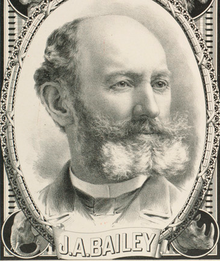
James Anthony Bailey (1847-1906) was the “Caesar of the Circus,” known for his tremendous energy and perseverance. The showman joined the circus as a young man, became partners with the notorious P.T. Barnum and grew the business to where it traveled the world. When he passed in 1906, a special train brought the workers and performers up from Grand Central Station to Bailey’s Mount Vernon home. Bailey’s coffin was brought to Woodlawn where it was placed in his family mausoleum.
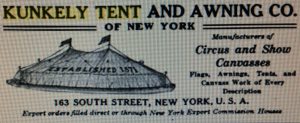
One of Woodlawn’s most unusual monuments is in the Filbert Plot and features a granite carving of a circus tent. At rest under the stone big top is Max R. Kunkely (1829-1910), owner of Kunkely’s Tent & Awning Company. The family business sold “Circus and Show Canvasses” from their store on 163 South Street in New York City. Smaller tents were made for traveling magicians and minstrel acts; large white tents with the company name stenciled on the side were sold to circuses.
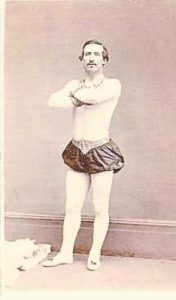
Near the circus tent monument in Lot A is a memorial to a celebrated bareback rider. In 2009, we received a call from St. Augustine, Florida from a researcher who found a curious collection of medals awarded to James Munro Melville (1835-1892). Like many of the sleuths that contact the cemetery, she was eager to solve a mystery and to tell the story of the “Champion Bareback Equestrian in the Sawdust Circle.” A native of Australia, Melville performed with several troupes including Barnum, Bailey & Hutchinson. Three of his children followed in his footsteps and became circus riders. Sheila Greenleaf, the generous historian, brought her study to a close when she placed a marker on the grave of the forgotten equestrian.
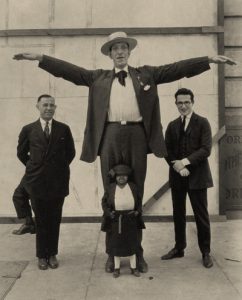 Circus sideshows were as popular as the acts that performed in the main tent. Captain George Auger, known as the “Cardiff Giant,” was seven and a half feet tall. When he attended the Barnum and Bailey Circus in London, he was “discovered” by the managers and invited to join the circus. In 1903 he made his New York debut at Madison Square Garden. Auger also worked as an actor, and appeared in the film Why Worry? When he died in 1922, the cemetery engineer had to create a special oversized grave in the Honeysuckle Plot.
Circus sideshows were as popular as the acts that performed in the main tent. Captain George Auger, known as the “Cardiff Giant,” was seven and a half feet tall. When he attended the Barnum and Bailey Circus in London, he was “discovered” by the managers and invited to join the circus. In 1903 he made his New York debut at Madison Square Garden. Auger also worked as an actor, and appeared in the film Why Worry? When he died in 1922, the cemetery engineer had to create a special oversized grave in the Honeysuckle Plot.
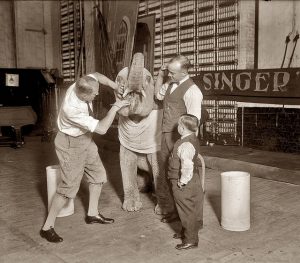
Noted animal trainer and dentist Dr. Martin J. Potter (1870-1920), made the news several times when he took care of the teeth of exotic animals. In August of 1905, Doc Potter cured the ills of Lena, an unhappy elephant when he drilled her infected tooth and filled the molar with $46 dollars worth of gold. In addition to treating animals, Potter trained diving horses at the Ben Hur Stables which were located in Gramercy Park.
Unfortunately the dare devil acts performed at the circus often lead to tragedy. Matt Untermeyer (1876-1927) was an acrobat who was holding a pole for his partner while he was performing a trick. The partner fell, tumbled on to Matt, resulting in a broken back from which he did not recover. Henry Willie, the other acrobat, survived with only a broken arm.
When Japanese Wrestler Matsuda Sorakichi (1859-1891) first came to America to launch his career, he performed with the circus as a juggler. Wrestling promoter William Muldoon, pulled Sorakichi from the side show and pushed him into the center ring. At one time he was called “the strongest man in the world.” Like many who were forced into what became known as the “Strong Man Circuit,” Sorakichi lived a very rough life and died at a young age.
Even though our tastes in entertainment change over time, at The Woodlawn Cemetery we are dedicated to preserving the memories of what went before us and sharing the stories of those in our care for generations to come. When the circus is in town for the last time, come to honor James Bailey and his contemporaries, those who were devoted to entertaining the people of New York.

